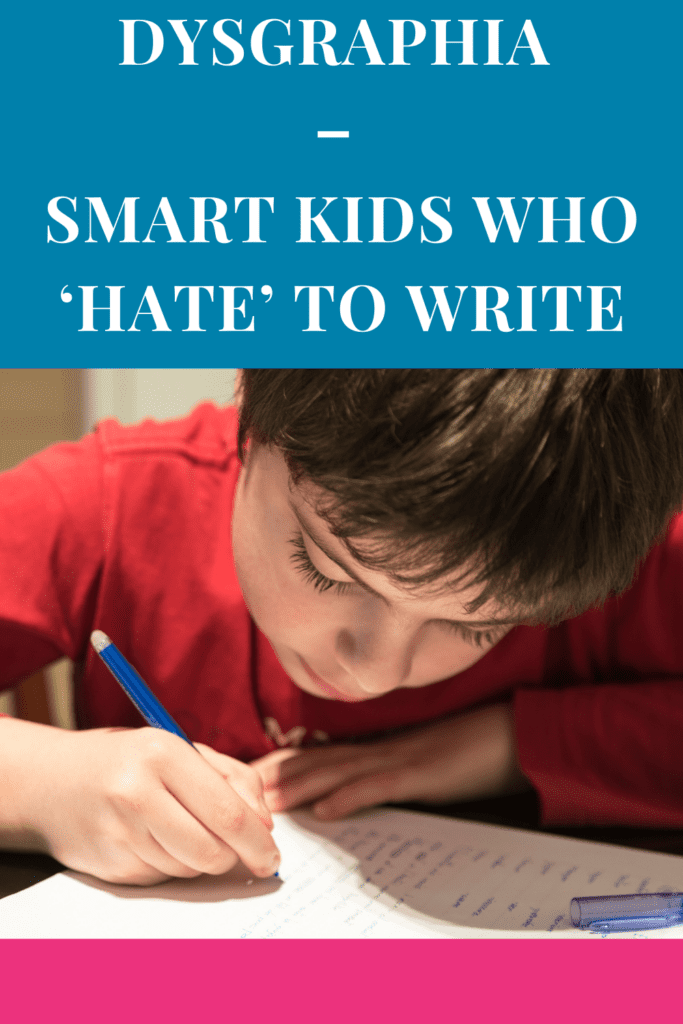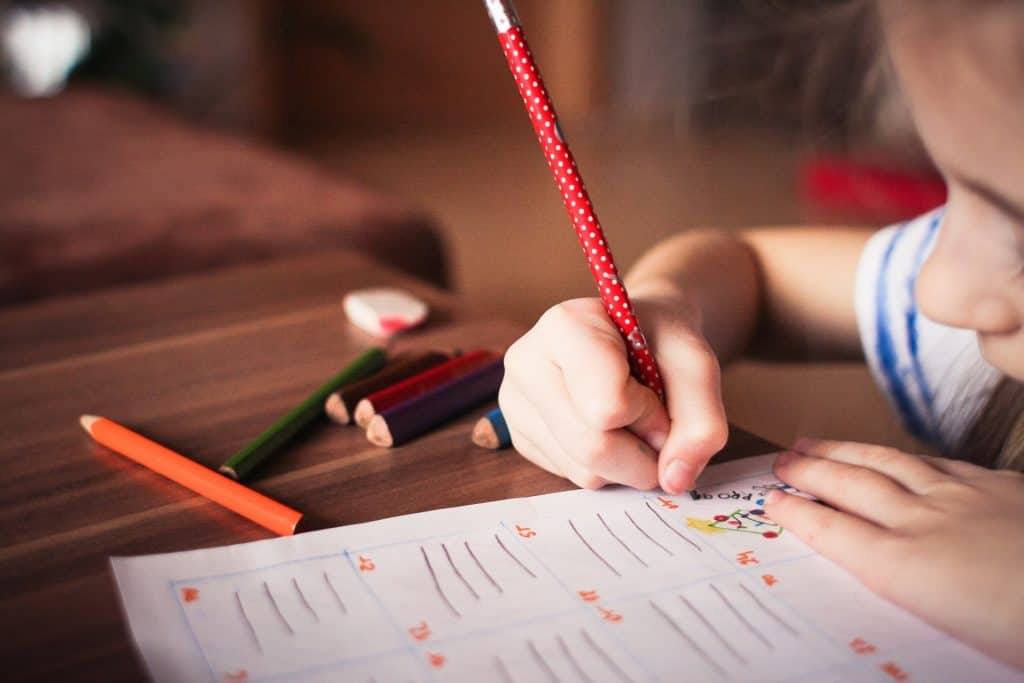Does your child hate to write? Have they been accused of being lazy and careless because their writing is sloppy?
Moms are often crushed when their child finally gets a diagnosis and they learn their child has more than one diagnosis. ADHD and dyslexia. Dyslexia and SPD. ASD and OCD. Dyslexia and Dyspraxia. The combinations are endless.
When it comes to reading difficulties, there is often overlap. For example 50% of children with ADHD have dyslexia. Many children with dyslexia also have dysgraphia.
And yet, dysgraphia does occur without dyslexia.
Dysgraphia and Dyslexia are Cousins
Dysgraphia is more specific to writing than reading but is still a language-based disability. It is closely connected to the same areas of breakdown that occur in both dyslexia as well as other reading disorders.
The main difference with stand-alone dysgraphia is that these kids often lack the poor fine motor skills that are necessary to write legibly. It is not uncommon for these same kids to also have dyspraxia. Afterall, overall poor coordination can affect everything from daily movements to writing.
When Writing is as Hard as Rocket Science
The main marker is that these kids have difficulty with writing their ideas on paper. Not only is their writing a laborious task and illegible, it takes them much longer to write.
These kids tend to hate writing because it requires so much mental energy. Processing their thoughts and concentrating on all the aspects that is required for writing to occur is an impossible task.
What It Feels Like
Have you ever tried playing drums? I did. It felt near impossible to get one hand to do a different rhythm than the left. This is what processing thoughts and writing them at the same time feels like for these kids.
If you’re a fluent writer fine motor control, spelling, grammar, syntax, proper spacing between letters and words feels like a ‘no-brainer’.
Organizing thoughts while doing all of the above is automatic. For kids with dysgraphia this can feel like an insurmountable task.
It’s no wonder they avoid writing, don’t do homework and don’t bother trying.
What It Looks Like
Kids with dysgraphia often have poor pencil grip. What is frequently overlooked are some of the underlying factors like poor posture, weak core muscle development and awkward gait. At times they will contort their body or hands in strange positions to write or angle their head differently.
I knew a child who wrote best when she was laying on her bed with her legs up the wall. Others like to lay on their belly to write.
This is because their sensory-motor system isn’t fully developed. When the lower brain levels are underdeveloped, the cortex (the higher brain levels) must do the lower brain level’s job which then prevents the cortex from doing the tasks it was designed to do – like processing, planning, writing and so much more.
The Solution
The key in addressing the underlying cause of dysgraphia is to develop the lower brain levels, to do exercises that increases communication between the left and right brain hemispheres as well as front to back processing.
Reading Rockstar Bootcamp offers one-on-one learning therapies that targets the underlying reason why learning, writing and reading is so hard for your child. Think of me as a personal trainer for your child’s brain.
Set up a free 20-minute discovery session to learn more about how you can help your child improve their visual processing so they can become a fluent reader and a more confident kid.


